- News
- Reviews
- Bikes
- Components
- Bar tape & grips
- Bottom brackets
- Brake & gear cables
- Brake & STI levers
- Brake pads & spares
- Brakes
- Cassettes & freewheels
- Chains
- Chainsets & chainrings
- Derailleurs - front
- Derailleurs - rear
- Forks
- Gear levers & shifters
- Groupsets
- Handlebars & extensions
- Headsets
- Hubs
- Inner tubes
- Pedals
- Quick releases & skewers
- Saddles
- Seatposts
- Stems
- Wheels
- Tyres
- Tubeless valves
- Accessories
- Accessories - misc
- Computer mounts
- Bags
- Bar ends
- Bike bags & cases
- Bottle cages
- Bottles
- Cameras
- Car racks
- Child seats
- Computers
- Glasses
- GPS units
- Helmets
- Lights - front
- Lights - rear
- Lights - sets
- Locks
- Mirrors
- Mudguards
- Racks
- Pumps & CO2 inflators
- Puncture kits
- Reflectives
- Smart watches
- Stands and racks
- Trailers
- Clothing
- Health, fitness and nutrition
- Tools and workshop
- Miscellaneous
- Buyers Guides
- Features
- Forum
- Recommends
- Podcast
review
£3,299.00
VERDICT:
Fast and very comfortable disc-equipped race bike
Weight:
7,500g
Contact:
At road.cc every product is thoroughly tested for as long as it takes to get a proper insight into how well it works. Our reviewers are experienced cyclists that we trust to be objective. While we strive to ensure that opinions expressed are backed up by facts, reviews are by their nature an informed opinion, not a definitive verdict. We don't intentionally try to break anything (except locks) but we do try to look for weak points in any design. The overall score is not just an average of the other scores: it reflects both a product's function and value – with value determined by how a product compares with items of similar spec, quality, and price.
What the road.cc scores meanGood scores are more common than bad, because fortunately good products are more common than bad.
- Exceptional
- Excellent
- Very Good
- Good
- Quite good
- Average
- Not so good
- Poor
- Bad
- Appalling
The new Focus Izalco Max Disc is based loosely on the regular Izalco Max carbon fibre race bike, as used by the Ag2r professional outfit for the past couple of seasons. This one's got disc brakes, though, which are all the rage in the cycling world right now.
Is this the ultimate disc brake-equipped road bike?
I've been riding it for some time now, following a first ride at the Italian launch event last summer, and it makes a strong case for that title. The tweaks to the frame and fork to accommodate the disc brakes are superficially quite minor, but bring some significant benefits: a more comfortable ride, space for wider tyres and handling that is direct and crisp. Oh, plus the extra control of the hydraulic disc brakes.
> Find your nearest dealer here
And how much does it cost?
There are two versions available. The lightest, and most expensive, is a model with a SRAM Red drivetrain and hydraulic disc brakes, and Zipp 202 carbon fibre wheels. It weighs a claimed 6.8kg but costs £4,699.
More affordable is the Shimano Dura-Ace version on test here, which mixes Shimano RS805 hydraulic disc brakes with a Dura-Ace rear mech, Ultegra 11-28 cassette, FSA SLK Light Carbon 52/36 chainset, DT Swiss R32 wheels, 25mm Schwalbe One tyres, and a Fizik bar, stem and saddle. It weighs 7.5kg and costs £3,299.
Give us some technical details then
Okay. Are you sitting comfortably? It might share the same name, and very similar aesthetics, of the regular Izalco Max, but the new bike has some significant differences. Impressively, the Max Disc frame weighs a claimed 790g for a size 54cm, with a fork weighing 320g. Those are good numbers for a non-disc carbon race frameset, let alone one beefed up for disc brakes.
The frame combines very modern details with one very conventional one – externally routed gear cables. This is deliberate: routing the cables externally makes the frame 50g lighter, and it also provides easier maintenance for the Ag2r team mechanic. But any home mechanic who has struggled to replace an internally routed gear cable will appreciate this too. Once fitted, hydraulic hoses should never need replacing, so Focus has routed the brake hoses inside the frame and fork.
Shift your attention to the wheels and we find the company's own RAT (Rapid Axle Technology) axles. They're bolt-thru axles using a large diameter axle (15mm front, 12mm rear) that locks into the opposing closed dropout. Unlike most other thru-axles that are threaded into the dropout, much like a conventional quick release, the RAT system requires a simple 180-degree turn to lock a T-bar on the end of the axle into the dropout.
I used the RAT system on the Focus Mares cyclo-cross bike I tested last winter, and it took me just a few moments to familiarise myself with the axle system again. It's wonderfully easy to use. I'd like to see this become standard on all bikes that use thru-axles. I can remove a wheel with RAT quicker than I can a regular quick release, for those overly concerned about slow wheel changes being a problem on disc road bikes.
The disc brake callipers are fixed onto the frame and fork using the latest Flat Mount design. Put simply, it's a lighter and cleaner mounting system and looks likely to become the standard that most manufacturers adopt.
Disc rotor rub has been an affliction that has ruined some early disc brake road bikes, but the Izalco Max doesn't display a hint of rotor rub at all. Admittedly I'm no heavyweight, but pushing and pulling on the handlebar as hard as I could on the climbs didn't force any unwanted flex in the fork.
Any changes to the geometry?
Yes. The chainstays are 10mm longer than the standard bike, producing a 998mm wheelbase. That's still short compared with endurance bikes but longer than most race bikes. It's a small difference, but importantly one that doesn't ruin the performance. If anything, it enhances the ride, with a slightly more stable characteristic.
Modern race bikes typically have short chainstays, in the region of 405mm, give or take a few millimetres. This provides the snappy and agile handling that racers favour. Add disc brakes to a frame with short chainstays and, because of the wider rear axle (to squeeze a disc rotor in between the dropouts), you can encounter chain line issues, leading to mis-shifts, even dropped chains. To counter this, Shimano recommends a 415mm minimum chainstay length.
In developing the S-Works Tarmac Disc I tested at the end of 2014, Specialized didn't follow Shimano's advice. Instead, it developed a quite ingenious workaround, allowing it to keep the short chainstays and identical geometry of its regular non-disc Tarmac. But it had one critical downside: you had to use the Roval wheels.
Focus has taken a more pragmatic approach with the Izalco Max Disc. It has followed Shimano's advice and simply lengthened the chainstays by 10mm. That's it, no specially modified hubs or special wheels required. Racers might be fearful that the 10mm change to the wheelbase will ruin the handling, but Focus is confident the change won't impinge on the performance and handling of the road bike, and if anything will actually be a benefit.
Disc brakes mean more tyre clearance don't they?
They do. The Izalco Max Disc comes fitted with 25mm tyres, which are rapidly becoming the new 23. Wider tyres help in the comfort department too, of course. The stock Schwalbe One tyres are an excellent choice and inflated to 5 bar (72psi) provide all the smoothness and grip you could want in a fast race bike, without it ever feeling soft or vague at higher speeds.
Better than that, there is space for up to 28mm tyres. To verify this, I tried some. They fit easily, with decent clearance between rubber and carbon. You might not want to tackle a muddy-cobble race, but they do fit.
With the bigger tyres, the ride is improved, with a marginally more comfort yet little discernible impact on speed. The bike did feel slightly less nimble, probably because of the extra weight of the wider tyres, and low-speed acceleration was more muted.
Is it comfortable?
Aside from the benefits of disc brakes, giving the Izalco Max the disc treatment has enabled Focus to rework the shape and carbon fibre layup of the seatstays. This, along with the removal of the now redundant brake bridge above the rear wheel, has freed up the seatstays to be refined to provide the bike with improved compliance over the non-disc version.
There's more. Focus has developed a new seatpost that is intended to further increase the comfort on offer. The Concept CPX Plus post, 27.2mm in diameter and 195g on the scales, is entirely made from carbon fibre, and a hollow section below the clamp mechanism is intended to absorb vibrations.
Seated comfort is excellent, no doubt enhanced not just by the seatpost but also the wider tyres and the changes to the frame. It's impressively smooth, not just for a race bike, but even compared with bikes that are designed expressly to be comfortable. Here's a race bike that doesn't beat you up after an hour or two around the Cotswolds lanes.
In fact, this is what is most striking about the new Izalco Max Disc: how it combines the smoothness of an endurance bike with the speed of a race bike. It simply soaks up bumps in the road, yet it's as fast as any other race bike on the market.
It's very refined, there's no choppiness, even on the most scarred road surfaces. From slow speeds to high tempo riding, the Focus provides such composure that you sometimes forget you're on a bike designed for racing. In fact, I'd go as far as saying it's smoother than some so-called endurance bikes.
But it is a race bike?
Yes, this is a bike designed for racing. That much is clear when you get into a fast pace line, or in the way the Focus responds to attacking sprints and surging hill climbs. It's no slouch. The racing DNA is easily unmasked when you get the bike up to speed and inject some watts.
It doesn't always 'feel' as fast as some other race bikes, simply because the bike is filtering out a lot of the harshness, especially at higher speeds. But a glance at the computer always reveals you're travelling quicker than you thought.
There's a lovely balance to the Focus. In the corners, the Izalco Max Disc reveals direct steering, light and communicative enough to allow minute adjustments mid-corner. There are no quirks. It's light enough to go toe-to-toe with other non-disc road bikes, on the flat or in the hills. It's a very capable bike. More than that, it's a cool bike.
The changes to accommodate the disc brakes have only served to provide an astonishing level of comfort with no impact on the bike's speed, acceleration and handling. It's one of the very best disc road bikes I've ridden, and if this is a taste of what's to come as more race bikes are given the disc brake treatment, I can't wait to see and ride them.
What sizes are available?
The Izalco Max Disc is available in seven sizes, from 48cm to 61cm. The 56cm I tested has a 565mm top tube and 160mm head tube, providing a reasonably low and stretched position with the stock 110mm stem. The wheelbase measures 998m with a 70mm bottom bracket drop and the head/seat tube angles are 73 degrees.
Is it well equipped?
Pretty well, yes. The Shimano hydraulic brakes are easy to operate, with great lever feel, and there's never any fear that you might lock a wheel, even in the wet. Focus has combined a 160mm front rotor with a smaller 140mm rear. The idea is to provide more punch from the front brake, which is more critical to the actual stopping ability of the bike. It saves a bit of weight from the smaller rear brake rotor, too, which is placed under fewer demands than the front rotor.
Focus has combined a cheaper Ultegra 11-28t cassette with expensive Dura-Ace derailleurs. The cassette is going to wear out long before the mechs, and there's marginal weight difference between an Ultegra and Dura-Ace cassette. The gear range provides a good spread for high tempo cycling and is low enough for most climbs – this is no sportive bike, though, so the gearing isn't as low as you'd find on an endurance bike.
I found no issues with the DT Swiss R23 DB wheels, with a good level of stiffness apparent. I had no concerns with durability through the test period either. It's a tubeless wheelset, so it would be easy to make a future upgrade to tubeless; If I bought this bike, that is something I would look to do.
Focus has clearly cherrypicked a few components to hit the £3,299 price tag, but there's nothing at all wrong with the FSA SLK Light Carbon chainset. It's plenty stiff enough and the 52/36t chainrings are a good combination for racers and sporty cyclists.
The Fizik Cyrano R3 handlebar has a comfortable shape with shallow, easy to reach drops, and the Fizik Antares R5 Manganese saddle is reasonably comfortable. I'd rather have an Arione saddle personally. That would be an easy change.
What of its rivals?
There aren't a lot of choices if you want a properly racy road bike with disc brakes, and top of the list of the ones I've ridden is the Specialized S-Works Tarmac Disc. Does the Focus come close to rivalling, or even bettering, the S-Works Tarmac Disc? Both are right at the forefront of a new wave of disc brake-equipped race bikes, and while the S-Works manages to retain identical geometry to the regular version, it makes a serious compromise in wheel choice with its special rear axle arrangement.
> Check out our guide to the hottest disc brake-equipped road bikes of 2016 here
The Izalco Max might have a longer wheelbase, but it's no detriment to the performance and handling, and the bigger tyre clearance, easy-to-use thru-axles and impressive comfort sees the Izalco Max just edge ahead.
Both are very good bikes, and if you're in the market for a proper race bike with disc brakes, you're not exactly spoilt for choice. But the Focus is easy to recommend. Anyone fearful that disc brakes might ruin a race bike need not worry.
Conclusion
Is the Focus Izalco Max Disc the ultimate disc brake-equipped race bike then? Right now, yes it is. There's very little competition and it's a massively exciting bike to ride with unsurpassed comfort that belies its racing credentials.
Verdict
Fast and very comfortable disc-equipped race bike
road.cc test report
Make and model: Focus Izalco Max Disc
Size tested: 56cm
About the bike
State the frame and fork material and method of construction. List the components used to build up the bike.
Focus says:
Thanks to its lightweight frameset with the new Flat Mount disc standard and in-house engineered R.A.T. (Rapid Axle Technology) thru-axle system, FOCUS engineers created a bike that easily sets the benchmark for race-ready, disc brake equipped road bikes.
Our advanced MAX carbon technology provides a special carbon layup of the frame – one that is unique to FOCUS bikes. This makes an unbelievably stiff, fully optimized 790g chassis (size M/54) available to performance riders, which makes the IZALCO MAX DISC the lightest disc equipped road bike frameset available. The IZALCO MAX's semi-monocoque construction guarantees a super stiff but also comfortable frame at the same time. Maximum speed in every situation without any energy loss on the finishing straight?
Frame Izalco Max P2T 10 Carbon
Fork Izalco Max P2T 10 Disc Carbon T4
Brakes Shimano RS805 Flatmount 160 mm / 140 mm
Cassette Shimano Ultegra
Rear derailleur Shimano Dura Ace
Shifter Shimano RS805
Crankset FSA SLK Light Carbon
Gear ratio front: 52/36 rear: 11/28
Handlebar fi'zi:k Cyrano R3
Stem CPX Carbon
Saddle fi'zi:k Antares R5 Manganese
Seatpost CPX Plus Carbon
Wheelset DT Swiss R23 DB tubeless ready
Tires Schwalbe One 622 X 25
Front derailleur Shimano Dura Ace
Tell us what the bike is for, and who it's aimed at. What do the manufacturers say about it? How does that compare to your own feelings about the bike?
Focus says:
More comfort with the new Concept CPX Plus Post
Speaking of comfort - at FOCUS, we love to consider each and every aspect of the bike – including the oft-overlooked seatpost. Our new in-house developed CPX Plus carbon seatpost is an integral part of this comfort concept. The seatpost's specific carbon layup structure in combination with its diameter of 27.2 mm results in an efficient suspension, that along with the frame, absorbs small bumps. The CPX Plus Post will be available in a road bike version with 25 mm setback (there is also a version for mountain bikes available with 0 mm setback). Comfort isn't the only advantage of this seatpost though – at only 195 grams it's also pretty light!
Different sizes – same riding experience
Humans are not made equal in terms of body dimensions. In order for every rider to experience the same performance aboard a FOCUS carbon bike, FOCUS engineers developed a solution:
SSPS – Stable Stiffness Per Size. The theory behind it is simple: bigger frame sizes consist of longer tubes, which are less rigid due to their increased length. At the same time, taller riders are usually heavier and produce more power than smaller riders and consequently need a stiffer frame.
To make sure riders with different heights and therefore different power profiles are fitted on frames that match their characteristics, the tubes' cross sections, geometry, as well as the lay-up of each FOCUS carbon frame have been adapted for each size. Larger sizes feature a stiffer lay-up for the down-tube for optimal power transfer, while smaller sizes have a unique carbon layup to make sure lighter riders experience the same vertical compliance and stiffness. This gives all riders the same riding experience.
Frame and fork
Overall rating for frame and fork
9/10
Tell us about the build quality and finish of the frame and fork?
Very high quality build with nice attention to detail.
Tell us about the materials used in the frame and fork?
Full carbon fibre frame and fork, 790g for a size 54cm, and uses the company's Stable Stiffness Per Size, which sees each size frame optimised.
Tell us about the geometry of the frame and fork?
The same as the regular bike but with 10mm-longer chainstays.
How was the bike in terms of height and reach? How did it compare to other bikes of the same stated size?
Long in the top tube, but the head tube isn't dramatically short. The result is a racy position.
Riding the bike
Was the bike comfortable to ride? Tell us how you felt about the ride quality.
Amazingly comfortable, thanks in part to the frame design, the new seatpost, and the wider tyres.
Did the bike feel stiff in the right places? Did any part of the bike feel too stiff or too flexible?
It didn't lack stiffness in the critical places.
How did the bike transfer power? Did it feel efficient?
Very efficiently.
Was there any toe-clip overlap with the front wheel? If so, was it a problem?
No.
How would you describe the steering? Was it lively, neutral or unresponsive? Relaxed.
Tell us some more about the handling. How did the bike feel overall? Did it do particular things well or badly?
Very stable and composed.
Which components had the most effect (good or bad) on the bike's comfort? would you recommend any changes?
The new seatpost and 25mm tyres contribute to the impressive comfort.
Which components had the most effect (good or bad) on the bike's stiffness? would you recommend any changes?
The equipment was all on point.
Which components had the most effect (good or bad) on the bike's efficiency? would you recommend any changes?
I'd change the saddle, but that's a personal thing.
Rate the bike for efficiency of power transfer:
8/10
Rate the bike for acceleration:
9/10
Rate the bike for sprinting:
9/10
Rate the bike for high speed stability:
9/10
Rate the bike for cruising speed stability:
9/10
Rate the bike for low speed stability:
8/10
Rate the bike for flat cornering:
8/10
Rate the bike for cornering on descents:
9/10
Rate the bike for climbing:
8/10
The drivetrain
Rate the drivetrain for performance:
8/10
Rate the drivetrain for durability:
8/10
Rate the drivetrain for weight:
7/10
Rate the drivetrain for value:
8/10
Tell us some more about the drivetrain. Anything you particularly did or didn't like? Any components which didn't work well together?
A good spread of gears from the 52/36 chainset and 11-28t cassette, ideal for racing but also long, hilly rides.
Wheels and tyres
Rate the wheels and tyres for performance:
8/10
Rate the wheels and tyres for durability:
8/10
Rate the wheels and tyres for weight:
7/10
Rate the wheels and tyres for comfort:
9/10
Rate the wheels and tyres for value:
8/10
Tell us some more about the wheels and tyres.Did they work well in the conditions you encountered? Would you change the wheels or tyres? If so, what for?
Decent tubeless-ready wheels and 25mm Schwalbe One tyres make a good package, and it's ripe for a tubeless upgrade in the future.
Controls
Rate the controls for performance:
8/10
Rate the controls for durability:
8/10
Rate the controls for weight:
8/10
Rate the controls for comfort:
9/10
Rate the controls for value:
8/10
Tell us some more about the controls. Any particularly good or bad components? How would the controls work for larger or smaller riders?
The Fizik handlebar has a satisfying shape and reach.
Anything else you want to say about the componentry? Comment on any other components (good or bad)
The bike is well equipped for the money, there's nothing you would want to change immediately.
Your summary
Did you enjoy riding the bike? Yes
Would you consider buying the bike? Yes
Would you recommend the bike to a friend? Yes
Rate the bike overall for performance:
9/10
Rate the bike overall for value:
8/10
Use this box to explain your score
Is the Focus Izalco Max Disc the ultimate disc-equipped race bike then? Right now, yes it is. There's very little competition and it's a massively exciting bike to ride with unsurpassed comfort that belies its racing credentials.
About the tester
Age: 31
I usually ride: My best bike is:
I've been riding for: 10-20 years I ride: Every day I would class myself as: Expert
I regularly do the following types of riding: road racing, time trialling, cyclo-cross, commuting, touring, mountain biking
David worked on the road.cc tech team from 2012-2020. Previously he was editor of Bikemagic.com and before that staff writer at RCUK. He's a seasoned cyclist of all disciplines, from road to mountain biking, touring to cyclo-cross, he only wishes he had time to ride them all. He's mildly competitive, though he'll never admit it, and is a frequent road racer but is too lazy to do really well. He currently resides in the Cotswolds, and you can now find him over on his own YouTube channel David Arthur - Just Ride Bikes.
Latest Comments
- ROOTminus1 1 sec ago
I'm glad the article went into more detail and cleared things up, the headline had me worried that some autonomous building had run rampant and...
- mark1a 18 min 32 sec ago
Still here, just showing a few signs of wear and tear. Hopefully still serviceable for some years to come.
- Secret_squirrel 48 min 24 sec ago
Has he fully recovered though, and will he ever?...
- Rendel Harris 1 hour 3 min ago
How can you know that you are "equally fearful" as "any female cyclist"? There is no possible way of quantifying such emotions and female cyclists...
- chrisonabike 1 hour 35 min ago
I think it would be fairer to blame the moon - as in "my client is a loony".
- Bungle_52 1 hour 58 min ago
Nice idea but Gloucestershire Constabulary are not interested as exemplified by this prvious NMOTD. Not only was there NFA for the close pass in...
- hawkinspeter 3 hours 30 min ago
I think black boxes are great for early detection of cognitive decline and/or sight problems. Someone's driving is going to become much less smooth...
- Bigtwin 4 hours 5 min ago
It's a fashion. https://guildford-dragon.com/shalford-driver-who-smashed-shalford-war-me...
- MTL Biker 4 hours 26 min ago
Robin Phans .....

































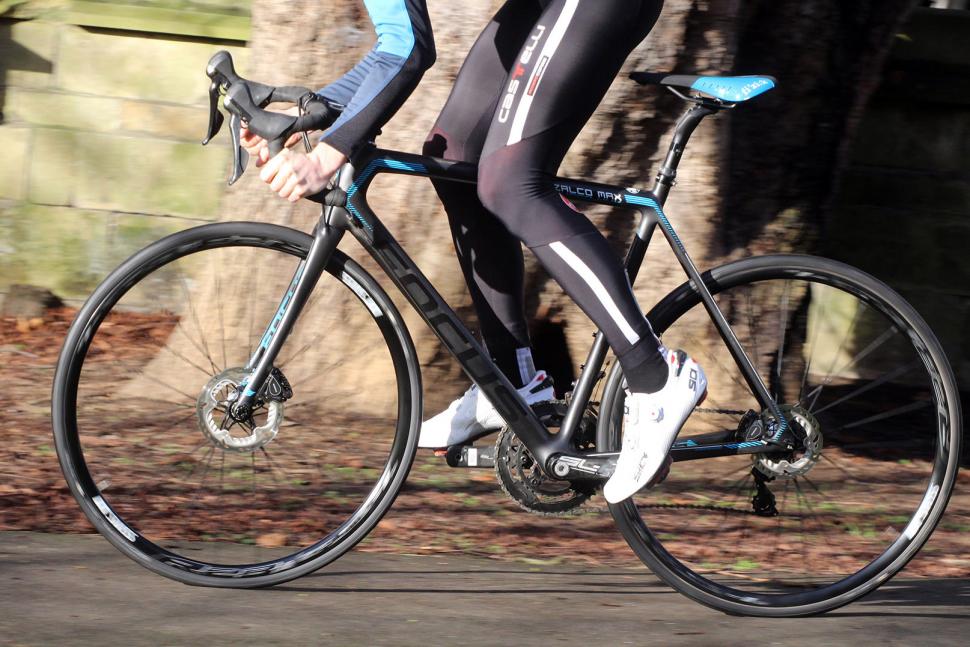
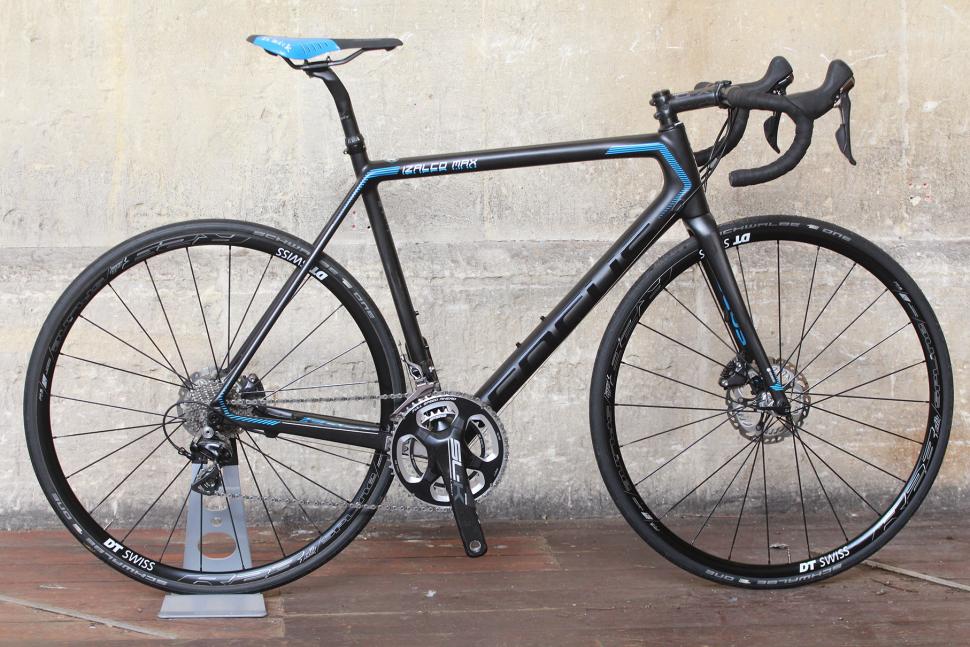


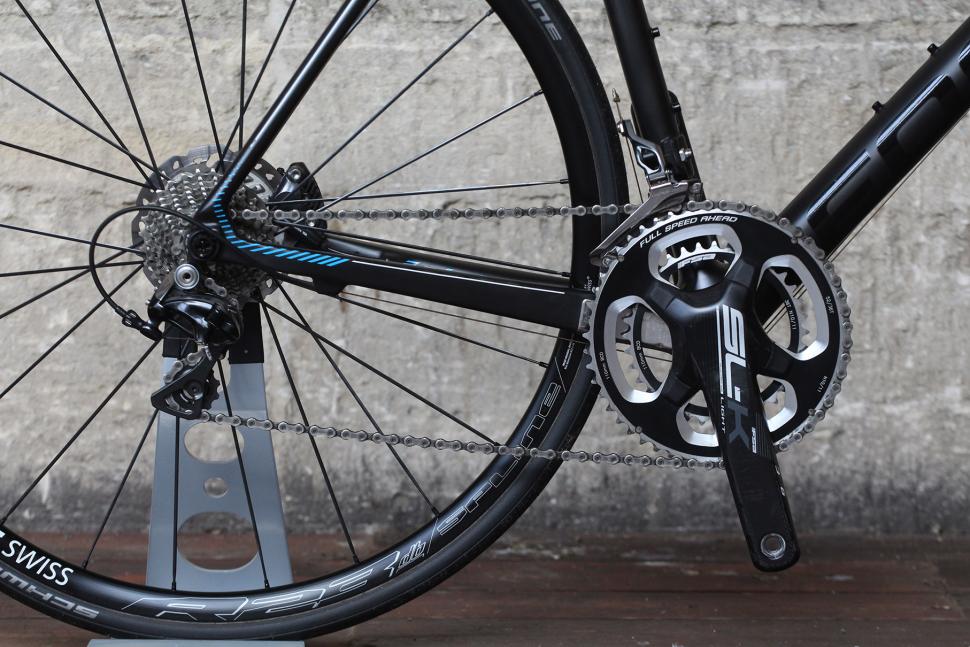
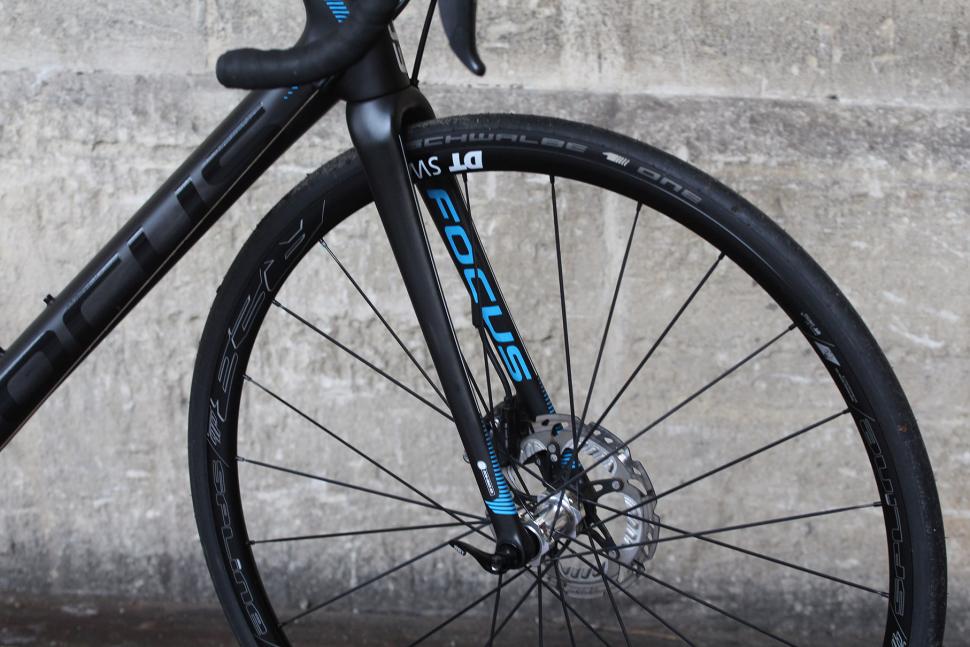



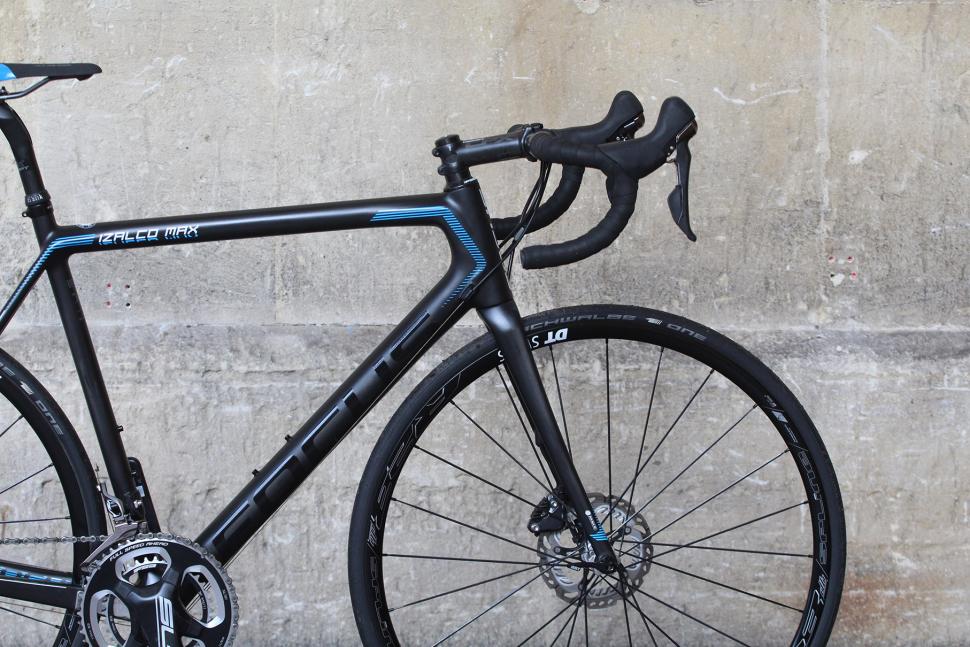
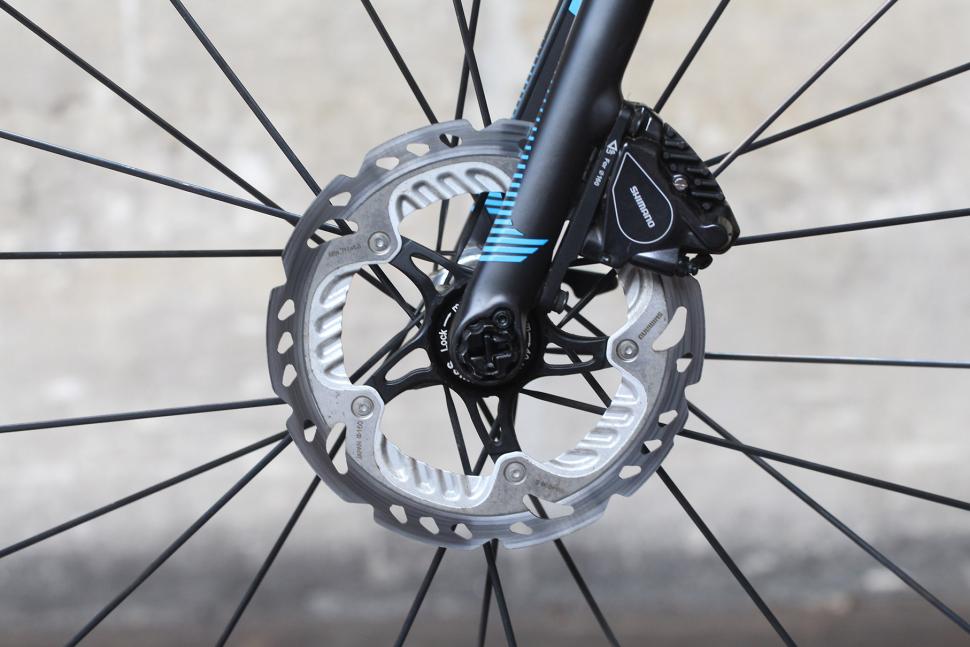

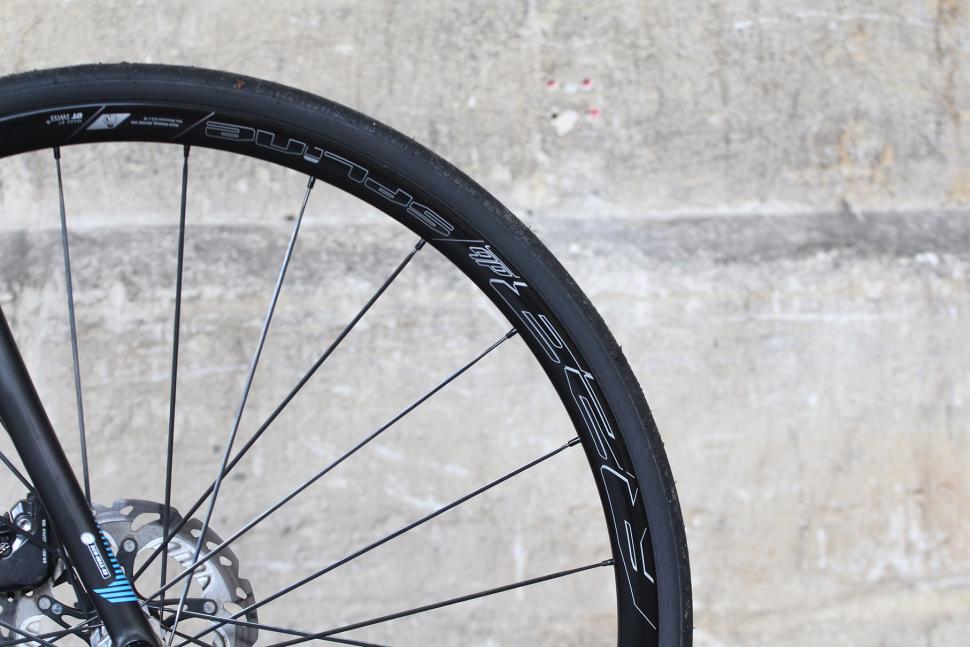
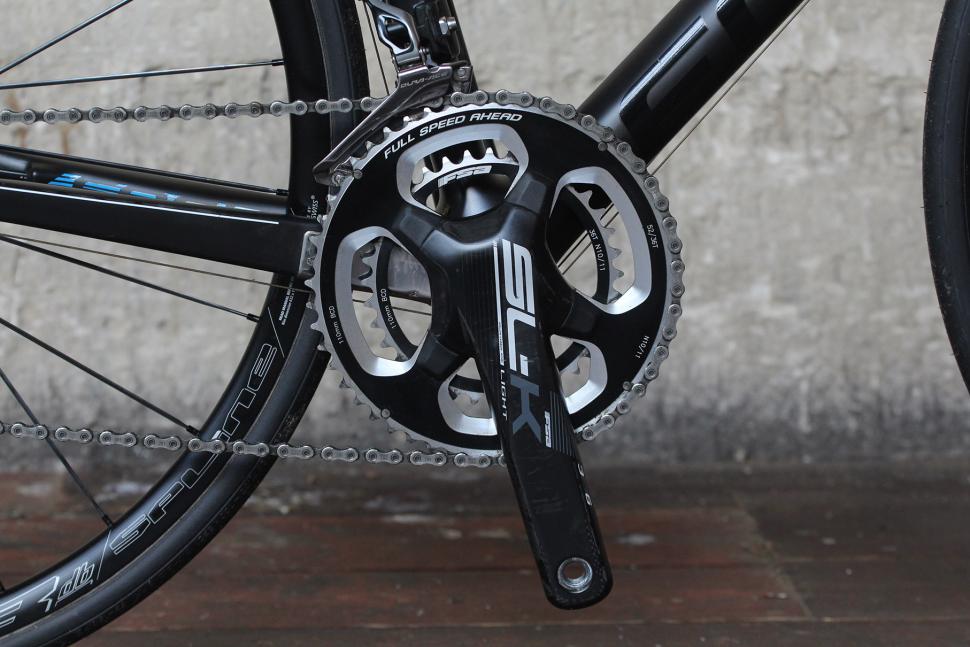
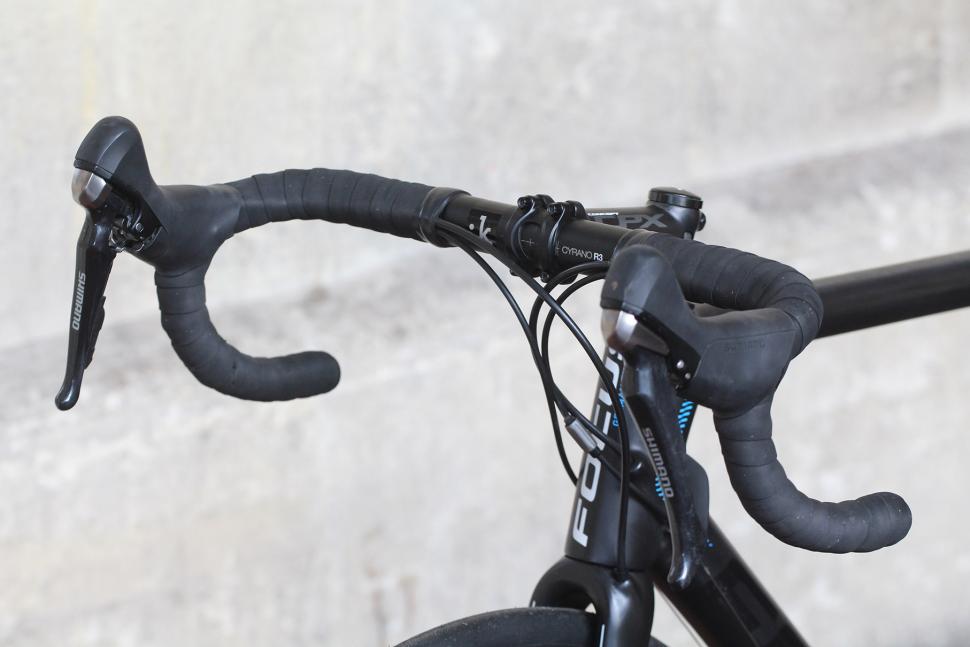
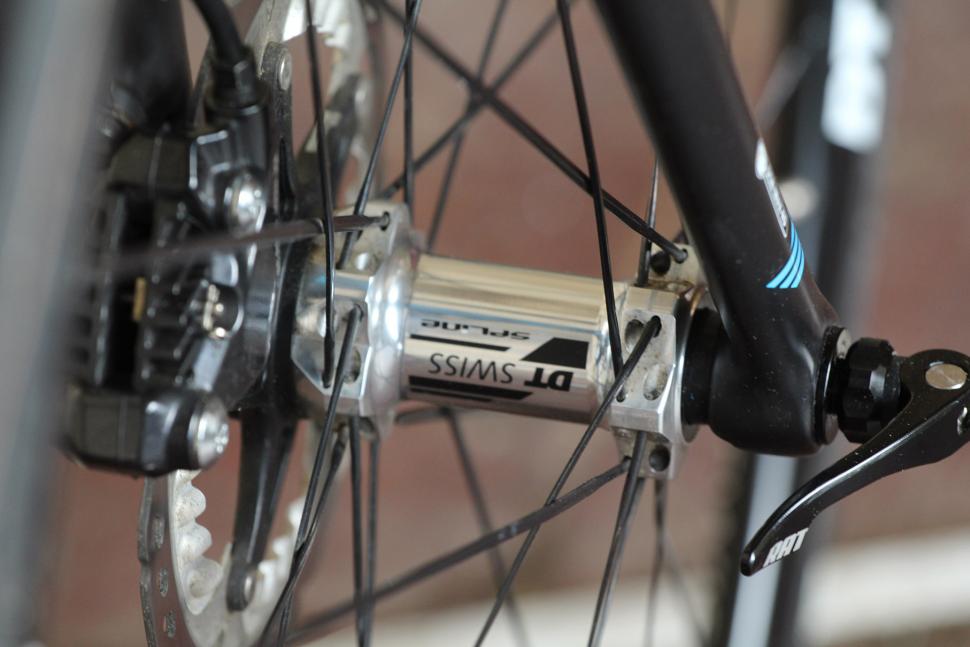




Add new comment
7 comments
I'll be a naysayer...for most of my 30+ years of cycling I've been an early adopter of new technology. I jumped right on Look pedals and SIS shifting for example as well as new frame materials. But disc feels like an attempt by bike manufacturers to sell people another bike they don't really need.. I've test ridden some disc bikes fairly extensively and find the stopping power and modulation only a little better than rim brakes which are already pretty good. Also it seems like the standards really haven't shaken out and it's a little early to buy something. On the other hand I can see their value in wet weather but since I live in southern California I dont really have to worry about that.
It's the wet thing really. And N=0.
If you can have lots of bikes, make your best one a bike with rim brakes, ride it in the sun.
If you can have one bike, get one with discs.
If you can have a variety of bikes get at least one with discs.
There are variants to the rules. Having a bike with discs makes you more likely to do things as well. Mate has a Synapse Carbon Disc, and other exotica. If his 100 miler looks wet, he'll take that and still do the 100 miler. With rim brakes he MAY give it a second thought.
Why is it a Dura Ace version when only the mechs are DA? Surely it's more of a mish mash version?!
Thanks for the review, any chance of a caad 12 ultegra disc review in the future?
Working on that Charles
IIRC, there is only RS805 caliper, not the STI. And from the picture it's identical to RS685 shifter...
Currently, this is almost the perfect road disc bike.
Flat mount, 12mm TA (although RAT is compatible and better than plain 12mm TA), just 10mm longer wheelebase, race geometry.
But my only concern is about the external cable routing.
From my personal upgrade from TCR C to TCR advcanced frameset, the internal cable routing on TCR advanced is just a little complicated at setup, but almost setup and forget.
Less friction, better protection for shifting cable. (framset provided thin cable for front derailleur makes the cable exposure to minimal).
It's almost 1 year and half, not any decay in shifting performance even I got caught in several heavy shower.
And if someone wants to use Di2 (no eTap hydraulic yet), case would be even worse, only externally mounted battery with ugly zip ties.
So I would just wait Canyon Ultimate disc for serveral more months.
Even though I am definitely not the fan of "German engineering", I am so glad this bike got glowing review. I think it definitely deserves it, as I've heard so much about it (and previous non-disc versions). For the money, I'm not sure you can find better.
Focus is ofetn overlooked by much more "louder names" in cycling only based on lack of "pedigree" built around racing victories and Italian loveliness (sure, I'm one of those losers).
Next up that I would really like to see is Cervelo R3 disc and S3 (disc) if it ever comes out :).